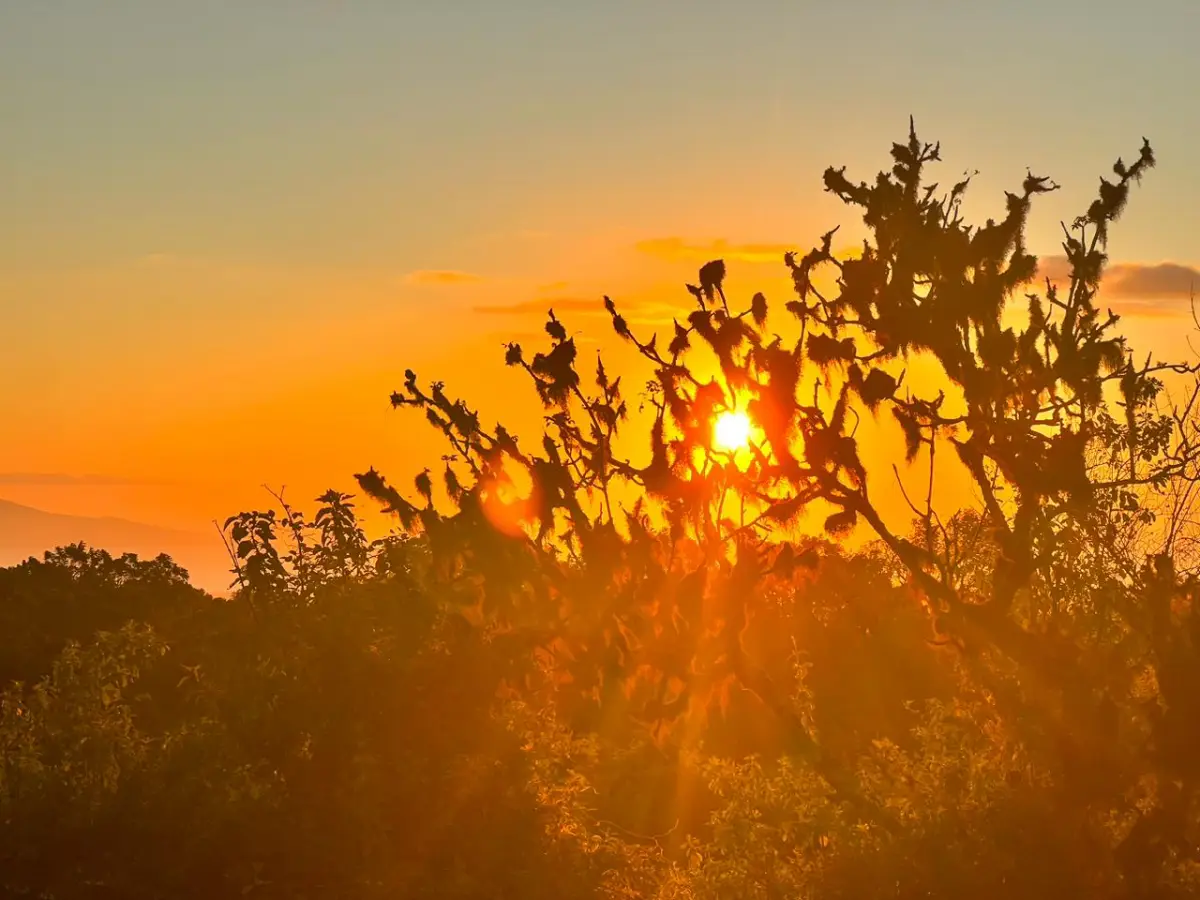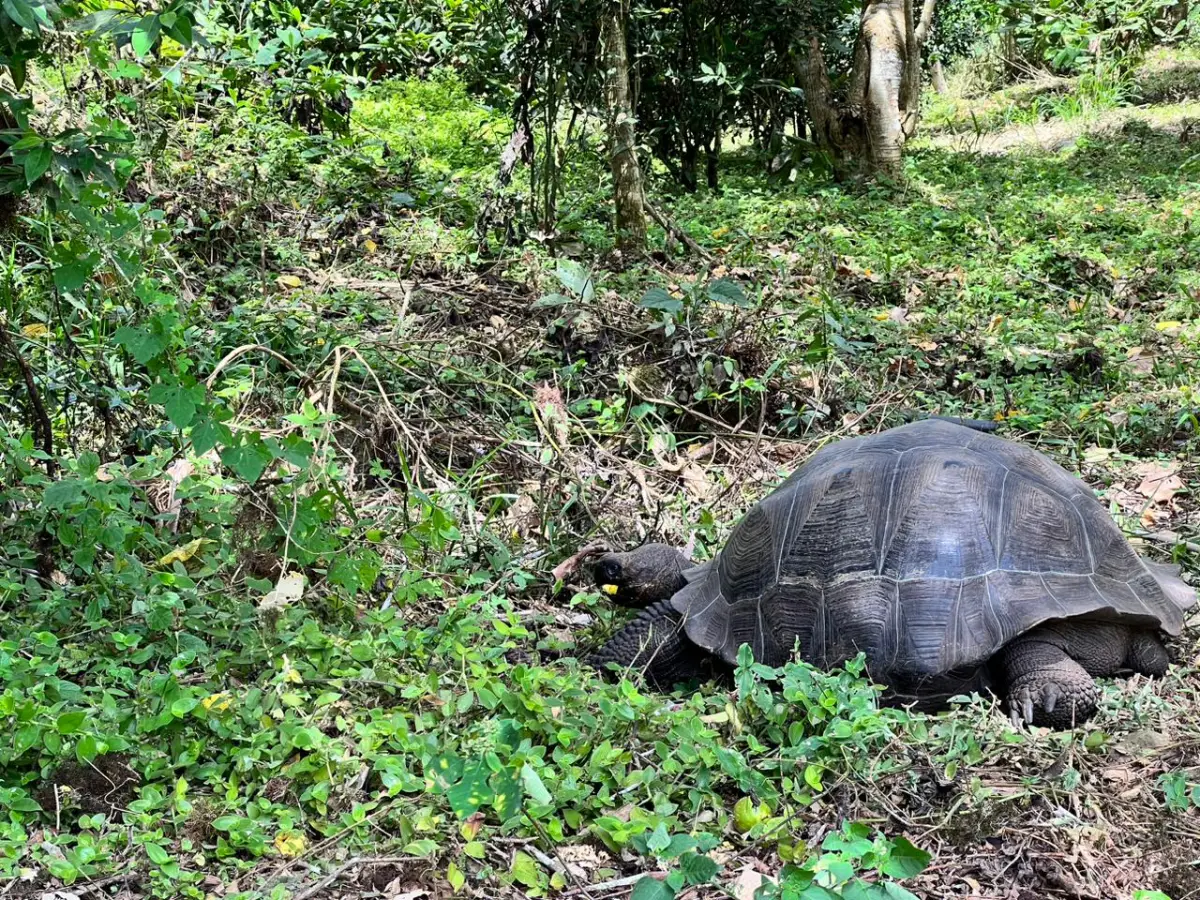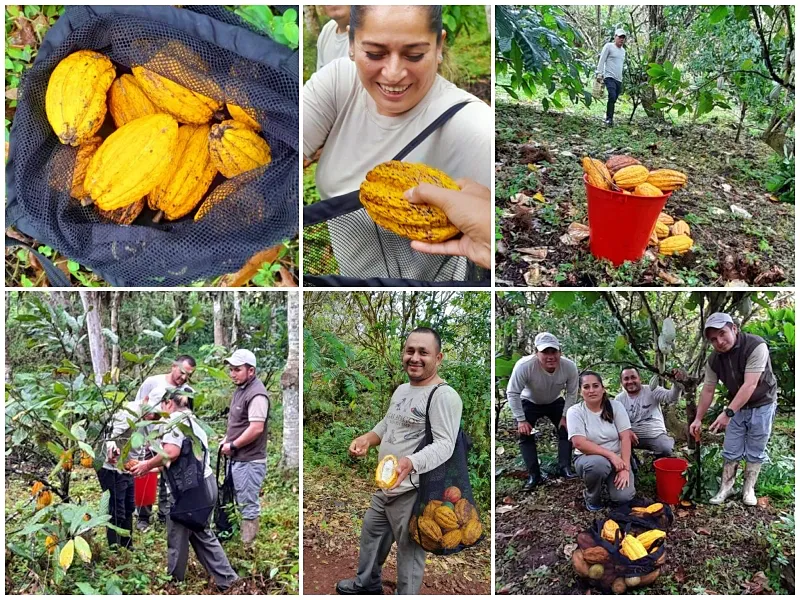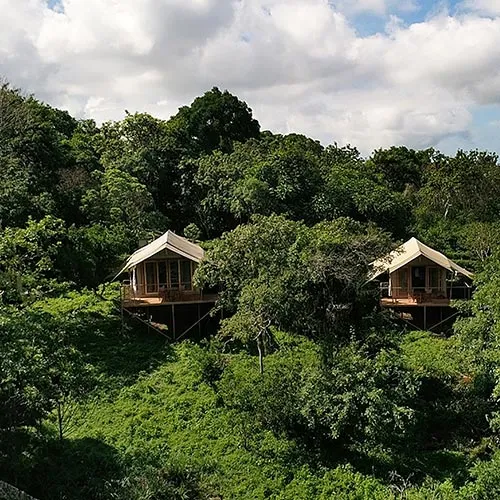Is August a good time to visit the Galapagos Islands?
When planning a trip to the Galápagos Islands, timing can make all the difference in what you’ll experience. Let’s delve into what August in the Galápagos has to offer.
Galapagos in August: Snapshot

Sunrise at Galapagos Safari Camp in August
- Ocean currents: The Humboldt Current prevails
- Weather: Mild and dry, with temperatures ranging from 67°F to 80°F.
- Seas: Expect slightly cooler waters with occasional choppier conditions.
- Wildlife: The surrounding oceanic currents foster a rich marine environment, making it a prime time for observing underwater life and engaging in marine activities like snorkeling and diving.
Galapagos Weather in August

Night skies at Galapagos Safari Camp (taken in August)
August nestles within the Galápagos Islands’ cool and dry season. Daytime temperatures linger between 67°F and 80°F (19°C to 27°C), making it an opportune time for terrestrial explorations. The sea, at 68°F to 74°F (20°C to 23°C), promises invigorating swims. Rain is sparse, replaced at times by ‘la garua’, a signature mist, which might veil the otherwise azure expanse above.
If aquatic pursuits beckon, be prepared for slightly choppier seas, influenced by moderate winds. Our land-based safaris offer an alternative way to explore the islands, and are ideal for those prone to sea-sickness and who may be put off by a cruise.
Galapagos Ocean Currents in August
The dance of oceanic currents around the Galápagos Islands is intricate and influential. Their ebbs and flows dictate the island’s climate and the profusion of its marine inhabitants. Come August, the waters are majorly governed by:
- The Humboldt Current: This cold current flows northwards from the southern waters off the coast of Chile and is strongest during the cool and dry season (June to December). In August, the Humboldt Current is dominant and is responsible for bringing nutrient-rich waters to the Galápagos, which support a high productivity of marine life.
- The Cromwell (or Equatorial Undercurrent) Current: This is a subsurface current that flows from the west directly under the equator. When it hits the western Galápagos Islands, like Fernandina and Isabela, it brings cold, nutrient-rich water to the surface, a process known as upwelling. This upwelling supports a vibrant food chain and is the reason for the high marine productivity on the western side of the archipelago, especially during the cool season.
- The Panama Current: This warmer current, flowing from Central America’s coast, wanes in influence during August, overshadowed by the mightier Humboldt Current.
The convergence of these currents around the Galápagos, especially the cold waters from the Humboldt and the Cromwell currents, results in cooler sea temperatures in August. This cooling effect brings a plethora of nutrients to the surface waters, which in turn supports a bloom of plankton. This abundance of plankton forms the base of the food chain, attracting a diverse range of marine species, from small fish to larger predators like sharks and whales.
Galapagos Wildlife in August

Giant tortoises at Galapagos Safari Camp, beginning their annual migration to the lowlands
The Galapagos remains a hotspot for biodiverse encounters year-round. Blue-footed boobies engage in captivating mating dances, sea lion pups frolic on the beaches, and Galápagos penguins glide through the waters. The underwater world is particularly bustling, with the presence of dolphins, whales, and a rich assortment of marine creatures, making it a sought-after time for scuba-diving.*
Galapagos Adventures in August
For those keen on active pursuits, August is favorable for hiking treks, especially around the volcanic terrains like Sierra Negra on Isabela Island. Biking enthusiasts will find exploring areas of Santa Cruz both insightful and rewarding.
Galapagos Safari Camp in August

Sunrise breakfast at Galapagos Safari Camp, August.
Experience the best of the Galápagos with a stay at Galapagos Safari Camp in August. Located in the scenic highlands of Santa Cruz, the camp merges luxury with nature. The month’s moderate climate accentuates the experience, ensuring comfort as you set out on guided tours, witnessing unique avian species and soaking in panoramic island views.
Cacao Harvest at Galapagos Safari Camp
August marks the exciting time of year when we harvest our cacao. The native cacao trees have played an important role in our reforestation project, providing much needed shade for the seedlings. They have also produced the first ever Galapagos chocolate bar. Read the full story The Story Behind the First Galapagos Chocolate Bar.

The August cacao harvest at Galapagos Safari Camp

The cacao beans are laid out to dry under the equatorial sun of the Galapagos islands
Reviews of Galapagos Safari Camp
The following are reviews posted by guests who stayed in Galapagos Safari Camp in August:
A Place to Make Outstanding Memories!!
This was my husband’s and my 3rd adventure to the The Galapagos, However, this trip was for one of our Grandson’s High School Graduation gift. We wanted to take him someplace where he would see things he had never seen before, learn about things he never realized he had an interest in, spend time alone with him and yet give him the opportunity to do things he enjoys doing like snorkeling and scuba divingFrom the moment we arrived on the “Camp’s ” property we were pampered. Alejandra made sure of it. She sat with us and planned our tours for the next several days, By no way were these routine tours that were given to us. Example, at the last minute our Grandson decided he wanted to do some scuba diving. Alejandra , went to work trying to find an opening with a reputable dive company. It was all taken care of by the time we returned from our daily tour. A memory our grandson will never forget as he saw a giant manta, Hammerhead sharks and so much more. She went over the menu for dinner daily to make sure each of us approved of it. I am Gluten free and every meal had home baked gluten free breads just for me. I had everything my grandson and husband had only it was prepared Gluten Free . As for the food, the meals were outstanding. My husband and I have spent a lot of time in Quito over the years and never did we experience such culinary excellence in Ecuador. If you can get Horae to strum a few tunes for you after dinner it is a real treat ( He also makes a great Mohito )!! At night when we got into our bed there was always an extra little touch thrown in for comfort. A hot water bottle was placed under the covers in the bed ( where your feet would be),
The internet is in and out , there is no TV, and yet an 18 year old had no problem living without internet, Wifi ,TV and cell service for a week! We played Chess, stargazed, and had discussions about our dreams and goals. It was one of the best trips we have ever experienced!! And it is an Experience.
Read the review on Tripadvisor
An Amazing Place!
It’s hard to explain the magic of Galapagos Safari Camp. It was truly a special place and you feel it from the second you step off the plane. The entire process from getting off the plane to getting to the camp was seamless. The staff at GSC has truly thought of every detail and taken the stress out of traveling. The camp itself was meticulously taken care of and the staff was extremely warm and welcoming. We stayed as part of their relaxation package which was an add on to our trip to the islands. We were able to relax, enjoy the views and experience some AMAZING cocktails in the lodge. I can’t recommend GSC enough. From the unbelievable food to the care and thought the staff put into every detail of our stay. You can’t go wrong with GSC and will be so happy you stayed.
Read the review on Tripadvisor
The best place ever!
Loved everything about it, the atmosphere, the attention to detail, the nature, the food…the care..Will be back soon with my family and friends for sure! Congratulations to all who made it happen! Enhorabuena!
Read the review on Tripadvisor
When to Visit the Galapagos by Month
For more information on the weather and wildlife in the Galapagos, please visit When to visit the Galapagos Islands or one of our monthly guides:
January, February, March, April, May. June, July, August, September, October, November, December.
Mainland Ecuador in August:
August in mainland Ecuador is as diverse as its topography, from the humid depths of the Amazon to the cool highlands of the Andes. Let’s explore what each region offers during this month:
Amazon Rainforest:
- Weather:
- August sees the Amazon rainforest in its dry season. While “dry” in the Amazon still means occasional rain showers, there’s generally less rainfall, making the forest trails more navigable.
- Attractions:
- With diminishing water levels, fauna flock to the few water bodies that remain, upping the odds of spotting them. Clearer skies also pave the way for nocturnal outings.
See our Amazon Tours
The Andes (including Quito):
- Weather:
- August in the Andean belt is characterized by crisp and relatively dry conditions. Quito basks in the warmth of 65°F to 75°F, while nights can see a dip to around 50°F. Other regions in the Andes might register marginally cooler readings due to altitude variations.
- Attractions and Events:
- The major highlight in August is Ecuador’s Independence Day on the 10th, especially in Quito, where the historical significance of the event is deeply rooted. The city is alive with parades, cultural events, and traditional festivities. Outside of the cities, it’s an ideal month for trekking and engaging with indigenous communities, who may have local celebrations and markets.
See our Andes Tours
Cloud-Forest:
- Weather:
- Similar to the Amazon, the Choco rainforest experiences its dry season in August, which makes it an excellent time for rainforest adventures.
- Attractions:
- At Mashpi Lodge, guests can enjoy guided tours to explore the unique biodiversity of this area, from vibrant bird species to elusive amphibians. August is particularly special as many trees fruit, drawing a diverse range of fauna.
Whether you’re enticed by the rich tapestry of mainland Ecuador’s landscapes and festivities, or by the exceptional wildlife of the Galápagos, August is undeniably an appealing time to immerse in Ecuador’s natural and cultural grandeur.
See our Cloud-Forest Tours
WHEN TO VISIT THE GALAPAGOS
Wildlife Disclaimer
* Our wildlife observations are based on our own first-hand experiences, as well as the experiences of our guests and guides. However, as with any wildlife tour, we cannot guarantee that you will see specific species or animal behaviors.
